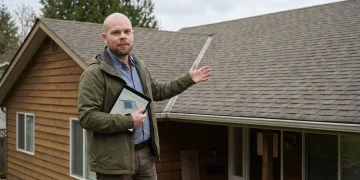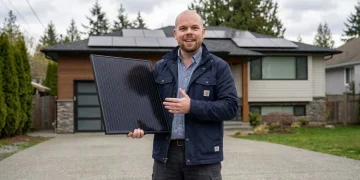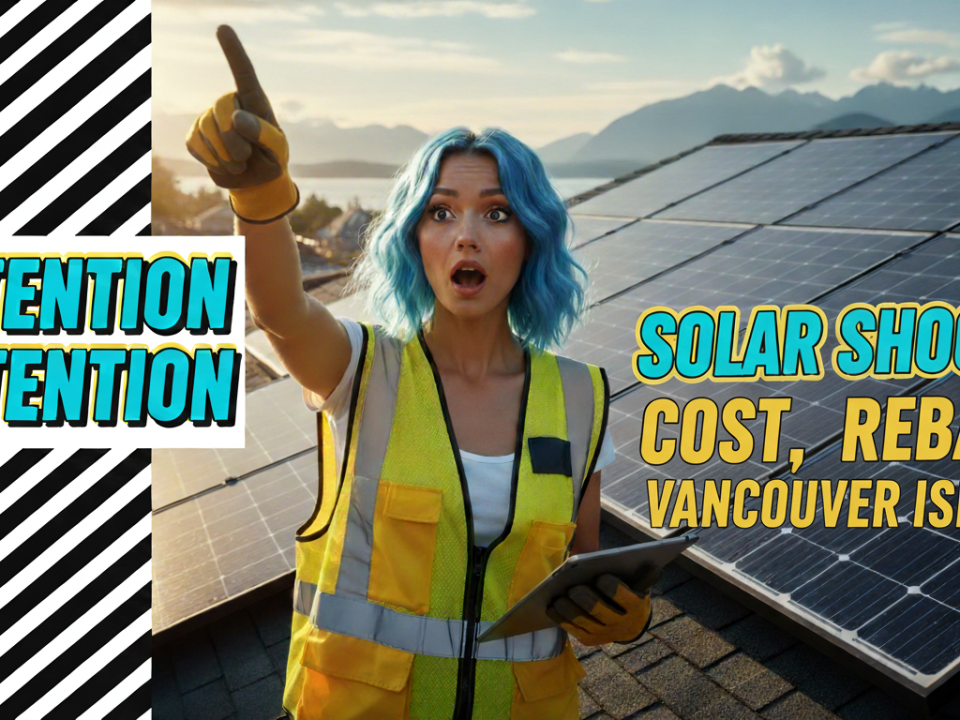
Solar Panels Nunavut Guide 2025
August 5, 2025
Solar Panels Quebec Cost Guide 2025 + Calculator
August 6, 2025Today, we’re looking at a place that’s close to my heart but tough for my line of work: Newfoundland and Labrador. I get a lot of questions about going solar on The Rock, and the truth is, it’s a different world out there compared to the rest of Canada. You’re facing a unique set of challenges.
So, let’s break it down. Is solar a smart move in Newfoundland and Labrador in 2025? This guide will walk you through the real numbers, the real problems, and the honest-to-goodness bottom line.

Introduction to Solar Energy in Newfoundland and Labrador
Why Consider Solar Energy in 2025?
The main reason people in Newfoundland and Labrador are even thinking about solar is simple: your electricity bills are going up. Despite being a province rich in hydro power, the costs keep climbing. For instance, on July 1, 2024, Newfoundland Power rates went up by an average of 7%. That’s a real hit to the wallet. When you see your power bill creeping up year after year, it’s natural to start looking for alternatives, a way to take back some control. Solar offers that promise—the idea of generating your own power and telling the utility company you don’t need them as much.

Current State of Solar Energy in Newfoundland and Labrador
To be blunt, the solar scene in Newfoundland and Labrador is struggling. The provincial government is all-in on massive hydro and wind projects, like the Churchill Falls expansion and offshore wind farms for green hydrogen. These are “megaprojects” designed to generate revenue for the province by exporting power.
Where does that leave rooftop solar? Unfortunately, it’s been left behind. There are no provincial rebates or special programs to help you with the cost. The government’s focus is on centralized, utility-scale power, not on helping individual homeowners generate their own. This lack of support has made it the toughest province in Canada to go solar.

Future Prospects for Solar Power in the Region
Looking ahead, the government’s energy strategy doesn’t show any signs of shifting towards solar. The big money and policy attention are firmly on wind and hydro. This means that for solar to become more popular, something else will have to change. Either the cost of installation needs to drop dramatically, or electricity rates need to rise so high that solar becomes a necessary defense against crushing bills. The most impactful change would be a reform of the net metering program, but there’s no indication that’s on the horizon.
Understanding Solar Panel Technology
How Do Solar Panels Work Financially In Newfoundland and Labrador?
This is the most important part. You install panels, they generate electricity. When the sun is shining, you use that power directly in your home. This is called “self-consumption,” and this is where you get the most value, because you’re avoiding buying electricity from the grid at the full retail rate of about 14.2 cents per kilowatt-hour (kWh).
But what about the extra power you generate? This is where it gets painful. The extra power goes to the grid, and you get a credit. However, at the end of the year, any leftover credits are cashed out at a rock-bottom wholesale rate. For the summer months when you generate the most surplus, that rate is a tiny 3.35 cents/kWh.
Think about that. You sell your valuable, clean power to the utility for 3.35 cents, and then in the winter, you have to buy it back from them for 14.2 cents. It’s a system that makes it almost impossible to get a good return on your investment.

What Are the Different Types of Solar Panels Available?
Most installers today use monocrystalline panels. They are the most efficient and have a good lifespan, which is what you need in a place with less sunshine. They have a sleek black appearance and perform better in low-light conditions compared to older polycrystalline (blue) panels. Given the challenges in NL, you shouldn’t settle for anything less than high-efficiency monocrystalline panels.
What Is the Lifespan of Solar Panels In the Region?
Modern solar panels are built to last. They typically come with a 25-year performance warranty. They do degrade slightly over time, losing about 0.5% of their efficiency each year. So, after 25 years, they should still be operating at around 87.5% of their original capacity. The panels themselves can handle the harsh weather, but it’s the mounting equipment and wiring that need to be top-notch to resist corrosion from salt spray if you live near the coast.
Benefits of Solar Panels in Newfoundland and Labrador
How Can Solar Panels Reduce Your Energy Costs?
Solar panels will reduce your energy costs, but not by as much as you might hope. The savings come from the electricity you generate and use yourself. If your system is sized correctly to match your daytime energy use, you can significantly cut down on the power you buy from the utility. However, because the credit for exported power is so low, you can’t just put a massive system on your roof and expect to eliminate your bill entirely.
What Are the Environmental Benefits?
This is one area where solar delivers without question. Every kilowatt-hour of electricity your panels produce is clean energy that doesn’t create greenhouse gas emissions. While Newfoundland and Labrador’s grid is already mostly clean thanks to hydro, solar allows you to take personal responsibility for your carbon footprint. It’s a tangible way to contribute to a greener future.
How Do Solar Panels Impact Property Value?
In markets with strong solar incentives and high electricity rates, solar panels can add significant value to a home. In Newfoundland and Labrador, this is less certain. Because the financial returns are so low, a potential buyer might not see the system as a major asset. It could be a selling point for an environmentally-conscious buyer, but you shouldn’t expect it to add thousands to your home’s resale price.
Solar Panel Installation Process
What Are the Steps to Installing Solar Panels?
- Consultation and Quote: An installer will assess your home, your roof, and your energy bills to design a system and give you a quote.
- Permits and Paperwork: The installer will handle the applications for the net metering program with Newfoundland Power and any necessary municipal permits.
- Installation: This usually takes a few days. A team will install the mounting racks, the panels, and the inverter, which converts the DC power from the panels to the AC power your home uses.
- Inspection and Connection: The system needs to be inspected by the utility before it can be turned on and connected to the grid.

How to Choose a Reliable Solar Panel Installer?
With a limited number of installers in the province, it’s crucial to do your homework.
- Tip for Choosing an Installer: Look for a company with a proven track record of installations in the province. Ask for references from past customers. Make sure they have experience dealing with Newfoundland Power’s net metering program. Get at least two or three quotes to compare pricing and equipment. Don’t just go for the cheapest option; quality and experience are paramount here.
I remember talking to a homeowner in Conception Bay South a while back. He went with an out-of-province company to save a few bucks. The installation was a nightmare, and when he had issues with his inverter, getting service was nearly impossible. It’s a lesson that local expertise matters, especially when the market is this small.
What Permits and Regulations Must Be Considered?
Your installer should handle this, but you are connecting a power plant to the grid, so there are rules. The system must be approved by Newfoundland Power under their net metering program. The program has a cap of 100 kW per project and a total provincial cap of 5 MW. Interestingly, after more than six years, only 17% of that provincial cap has been filled, which tells you everything you need to know about how unattractive the program is.
Financial Considerations and Incentives

How Much Do Solar Panels Cost in 2025?
Prepare for some sticker shock. Newfoundland and Labrador has the highest installation costs in Canada. You should expect to pay around $4.00 per watt. For a typical 7.5 kW residential system, that’s a total cost of $30,000. This is significantly higher than in provinces like Ontario or Alberta, where costs can be under $3.00 per watt. The high price is due to shipping costs and a lack of competition among installers.
What Financing Options Are Available?
The best and really only financing option to consider is the Canada Greener Homes Loan. It provides an interest-free loan of up to $40,000 for 10 years. This is a huge help because it eliminates financing costs, which would otherwise make the investment even worse.

Are There Any Government Incentives or Rebates?
This is the key problem.
- Provincial Incentives: There are none. Zero. Nothing from the provincial government to help you with the cost.
- Federal Incentives: You can get the Canada Greener Homes Grant, which provides up to $5,000 back on the cost of your system.
So, on a $30,000 system, you can get a $5,000 grant, bringing your net cost to $25,000, which you can then finance with the 0% loan.
Here is a table summarizing the financial data:
| Parameter | Value | Notes |
|---|---|---|
| Province | Newfoundland and Labrador | |
| Province Code | NL | |
| Utility Electricity Rate ($/kWh) | $0.1423 | This is the rate you save by using your own power. |
| Federal Incentive Amount ($) | $5,000 | Canada Greener Homes Grant. |
| Provincial Incentive Name | None | |
| Provincial Incentive Value | $0 | |
| Provincial Incentive Type | $ Amount | |
| Net Metering Credit Rate ($/kWh) | $0.0335 | The devastatingly low rate for summer surplus power. |
| Price Per Watt ($/Watt) | $4.00 | Highest in Canada. |
| Panel Degradation Rate (%) | 0.5% | Industry standard. |
| Electricity Inflation Rate (%) | 3.0% | A conservative estimate. |
| Financing Available | On | Primarily the federal 0% loan. |
| Down Payment (%) | 0% | For the federal loan. |
| Loan Term (Years) | 10 | For the federal loan. |
| Interest Rate (%) | 0% | For the federal loan. |
Net Metering Explained
I’ve touched on this already, but it’s worth repeating because it’s the deal-breaker. On a monthly basis, your surplus power earns you credits. If you have a sunny July, you can use those credits in a cloudy August. But at the end of your 12-month cycle, any remaining credits are cashed out at the low wholesale rate. This policy actively discourages you from installing a system that will cover your full year’s worth of energy use, because you lose so much value on the power you export in the summer.
Maintenance and Troubleshooting
How to Maintain Your Solar Panels for Optimal Performance?
Solar panels are very low maintenance. The rain will wash them off. The biggest issue in Newfoundland and Labrador is snow. A layer of snow can completely halt production.
- Tip for Snow Removal: If your panels are safely accessible, you can use a soft roof rake to gently remove the snow. Never use hot water or harsh tools, as you could damage the panels. For most people, it’s best to just wait for the snow to melt and slide off.
What Are Common Issues and How to Fix Them?
The most common point of failure isn’t the panels, but the inverter. If your system stops producing power, the inverter is the first thing to check. Most systems come with monitoring software that will alert you to any problems.
When to Call a Professional for Help?
Unless you’re an electrician, you should call your installer for any technical issues. Don’t try to fix wiring or inverter problems yourself. This is high-voltage equipment and it’s not worth the risk.

Case Studies and Success Stories
What Are Some Successful Solar Panel Projects in Newfoundland and Labrador?
Success in this market has to be defined differently. A “successful” project is one where the homeowner went in with realistic expectations. They weren’t looking for a quick payback. They were motivated by environmental concerns or a desire for some energy independence. I spoke with a family in St. John’s who installed a system with battery storage. They knew the financial return would be poor, but their goal was to have backup power during outages. For them, the peace of mind was worth the high cost. That’s a success story in this context.
Lessons Learned from Early Adopters
The biggest lesson is that you have to understand the net metering policy inside and out. The early adopters who installed large systems expecting to wipe out their bills were disappointed. The ones who sized their systems to maximize self-consumption and minimize exports have been happier with the results.
Conclusion
Is Solar Energy Right for You and Worth it?
Let’s be perfectly clear. For the vast majority of people in Newfoundland and Labrador in 2025, if your only motivation is to save money, solar is not a good investment. The combination of high installation costs and the terrible net metering credit rate means your payback period will likely be 20 years or more.
However, it might be worth it for you if:
- You are passionate about reducing your carbon footprint.
- You want some level of energy independence and are considering a battery backup system.
- You are planning to stay in your home for 20+ years and are making a long-term bet against future electricity rate hikes.
Best Case Scenario
The best-case scenario is for a homeowner who can use the 0% federal loan and sizes their system carefully. They work with their installer to analyze their power usage and install a system that meets most of their daytime needs, but doesn’t create a large annual surplus. They understand it’s a long-term investment and are happy with the modest annual savings and the environmental benefits.
Next Steps for Interested Homeowners
- Reduce First: Before you produce, reduce. Use the TakeCHARGE rebates to improve your home’s insulation and efficiency. This is the most cost-effective way to lower your energy bills.
- Get Quotes: Talk to at least two local, experienced installers. Ask them for a detailed financial analysis that uses the correct, low net metering credit rate.
- Read the Fine Print: Understand the quote, the warranties, and the net metering agreement.
- Make an Informed Decision: Weigh the high upfront cost and long payback against the environmental benefits and your personal reasons for going solar.
I hope this straightforward guide has been helpful. My job is to give you the real picture, and in Newfoundland and Labrador, the picture is a challenging one. But with the right information, you can make the decision that’s truly right for you.








